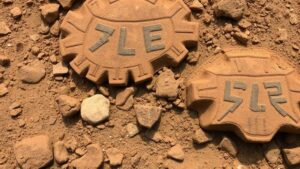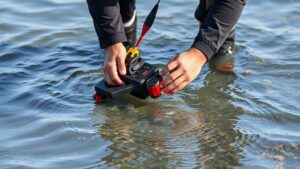Locating Cargo Chests in Submerged Wrecks With Advanced Scanning
Introduction
The underwater world is rich with history, often buried beneath the waves in the form of submerged wrecks. Among these remnants lie cargo chests containing valuable artifacts, treasure, and historical insights. Locating these chests presents a significant challenge, but advances in scanning technology have transformed wreck exploration into a more effective and efficient endeavor. This article will explore the methodologies involved in locating cargo chests in submerged wrecks using advanced scanning techniques.
The Importance of Advanced Scanning Technologies
To understand the potential of advanced scanning for locating cargo chests in submerged wrecks, its essential to recognize the various technologies employed in marine archaeology and exploration. These scanning techniques surpass traditional methods in precision, speed, and reliability.
Sonar Technology
Sonar (Sound Navigation and Ranging) has been a pivotal technology in underwater exploration. Modern sonar equipment, particularly side-scan sonar, can create detailed images of the seafloor and submerged structures. This technology operates by emitting sonar waves that bounce off objects, allowing for the generation of high-resolution images.
- Case Study: The Titanic – In 1985, the discovery of the Titanic was made possible using side-scan sonar. The technology provided researchers with precise imaging that revealed the ships massive structure resting nearly 12,500 feet below the surface, as well as potential cargo holds that might contain artifacts.
- Example: The Black Sea Shipwrecks – Recent explorations in the Black Sea have utilized multi-beam sonar to map the seafloor. Researchers uncovered several ancient shipwrecks, which may include cargo chests, by analyzing sonar data for anomalies.
Magnetometry
Magnetometry is another scanning technology employed for locating wrecks. This method detects magnetic anomalies caused by ferrous materials, such as iron and steel, which are often found in cargo chests. By mapping these anomalies, researchers can pinpoint likely wreck sites.
- Real-World Application: WWII Vessels – During investigations of World War II underwater wrecks, magnetometers have successfully identified numerous cargo vessels, leading to recoveries of military supplies and personal artifacts.
- Example: The Great Lakes – The Great Lakes have seen commercial activities since the 17th century, and magnetometry has aided in the discovery of numerous submerged ships laden with cargo from that era.
Integrating Technologies for Comprehensive Exploration
While individual scanning technologies are effective, their integration enhances data reliability and accuracy. Combining sonar, magnetometry, and underwater drones provides a multi-faceted approach to locating cargo chests.
Underwater Drones (ROVs)
Remotely Operated Vehicles (ROVs) have revolutionized underwater exploration. Equipped with cameras and various sensors, ROVs can investigate wreck sites in real-time, providing valuable visual and physical data that complements sonar and magnetometry readings.
- Case Study: The USS Monitor – The ongoing ROV investigations of the USS Monitor wreck have not only documented the site but also retrieved specific cargo, offering deeper insights into its history and the items it carried.
- Application: Archaeological Surveys – Many archaeological projects, including the excavation of ancient Roman vessels, utilize ROVs to survey potential wreck sites identified through sonar and magnetometry data.
Challenges in Locating Cargo Chests
Despite significant technological advancements, locating cargo chests in submerged wrecks presents several challenges. These include:
- Environmental Factors: Strong currents, low visibility, and varying seabed compositions can hinder scanning efforts.
- Cultural Heritage Considerations: Legal frameworks surrounding underwater cultural heritage may restrict exploratory actions and artifact recovery.
Environmental Challenges
Marine environments can be unpredictable, often obscuring the scanning signals and creating noise in the data. For example, sedimentation can cover wrecks, making them more difficult to locate. Advanced sonar technology continues to evolve, but environmental conditions remain a factor that needs to be accounted for in any search operation.
Legal and Ethical Considerations
Legal frameworks, such as the UNESCO Convention on the Means of Prohibiting and Preventing the Illicit Import, Export, and Transfer of Ownership of Cultural Property, complicate how and where excavations can occur. Researchers often must collaborate with maritime authorities and follow strict guidelines to ensure the protection of underwater cultural heritage.
Conclusion
Locating cargo chests in submerged wrecks with advanced scanning technologies is a dynamic and ever-evolving field. With the combination of sonar, magnetometry, underwater drones, and skilled operatives, the potential for recovery and historical insight is greater than ever. But, it is crucial to remain mindful of environmental variables and legal implications that can impact these explorations.
As technology continues to advance, the mysteries of submerged wrecks, including their cargoes, are likely to reveal more about maritime history and cultural heritage. Continued investment in research and technology will facilitate deeper explorations of our oceans and the treasures they hold, preserving their stories for generations to come.



